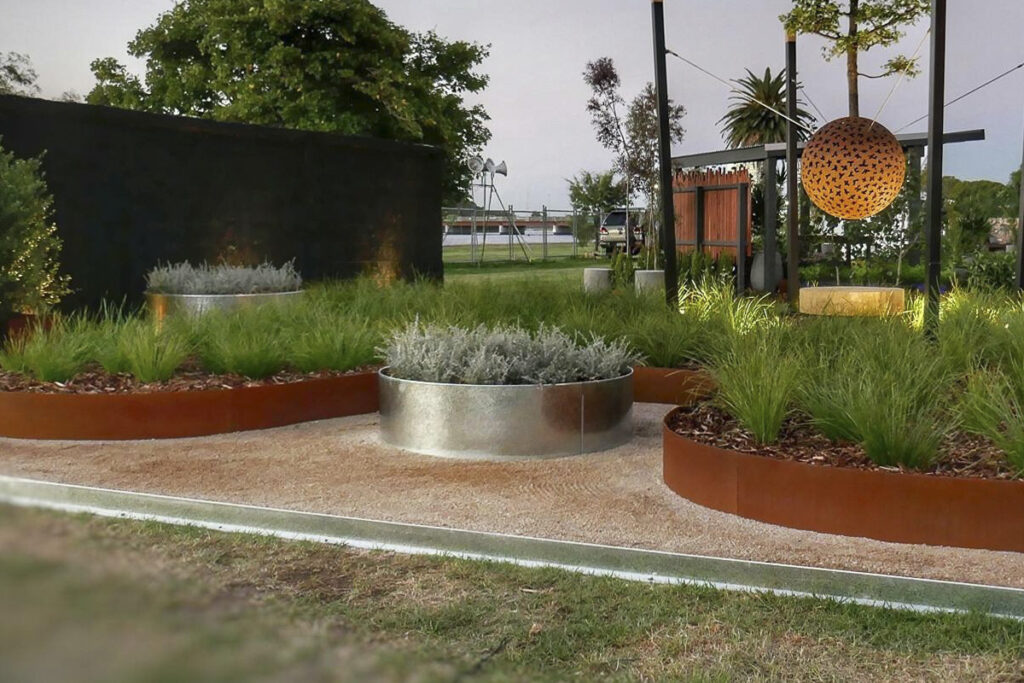Landscape border, often perceived merely as a tool for delineating spaces and adding aesthetic appeal to gardens, is pivotal in enhancing plant health and soil management. This multifaceted landscaping element does more than create clean lines and prevent grass from invading flower beds. It serves as a vital component in promoting a healthy ecosystem. By delving into the benefits and methods associated with garden edging, gardeners can unlock the potential to significantly impact their garden’s vitality, ensuring plants and soil thrive in harmony.
Root Protection and Microclimate Regulation
One of its primary advantages is safeguarding roots from mechanical damage caused by lawnmowers and trimmers. This protective barrier minimises physical harm to roots, reducing plant stress and encouraging healthier growth. Furthermore, edging can help create microclimates within it. Materials used in edging can affect local conditions, such as temperature and moisture levels, creating niches that cater to the specific needs of different species. This nuanced control over the environment allows cultivating a broader variety of plants, each benefiting from conditions tailored to their unique requirements.
Soil Erosion Prevention and Moisture Retention
Soil management is another critical area that plays a crucial role. Edging is a physical barrier that prevents soil erosion, a common issue in gardens exposed to heavy rain or wind. By retaining soil within designated areas, edging ensures that essential nutrients remain available to the plants that need them rather than being washed or blown away. Additionally, the presence of edging can significantly enhance moisture retention in the soil. By reducing runoff and evaporation, it helps maintain consistent soil moisture levels, vital for plant health, especially during dry periods.
Nutrient Preservation and Pest Prevention
Beyond moisture and soil retention, it contributes to nutrient preservation. By demarcating specific areas for different plant groups, gardeners can optimise nutrient application, ensuring that fertilisers and organic matter are concentrated where they are most needed. This targeted approach prevents the unnecessary spread and wastage of valuable nutrients, promoting more efficient resource use.
Moreover, a well-planned strategy can deter pests from invading plant areas. Certain edging materials can act as physical barriers to snails, slugs, and other common pests, reducing the likelihood of infestation. Additionally, edging to elevate the soil or create distinct divisions between different zones can aid in preventing the spread of diseases, keeping plant bases dry and less susceptible to fungal and bacterial infections.
Choosing Materials and Installation Techniques
When selecting materials, gardeners should consider their ecological impact and compatibility with their garden’s aesthetic. Natural materials like stone, wood, or even dense plantings offer permeability, ensuring that water and air can move freely to roots, which is essential for plant health. These eco-friendly materials complement the surrounding landscape without drawing attention to themselves, elevating its aesthetic value.
Conversely, synthetic materials, such as plastics or metals, may offer durability and ease of installation but can have drawbacks, including potential heat retention or chemical leaching, which could negatively affect soil health. Therefore, the choice of material should carefully consider its environmental impact and function.
Garden edging is more than just an aesthetic choice for gardeners; it is a strategic tool that significantly impacts plant health and soil management. The benefits of being well-chosen and correctly installed are manifold, from protecting roots and preserving moisture to preventing soil erosion and deterring pests. By harnessing its power, gardeners can create spaces that are beautiful to behold and that are thriving havens of biodiversity and health.






